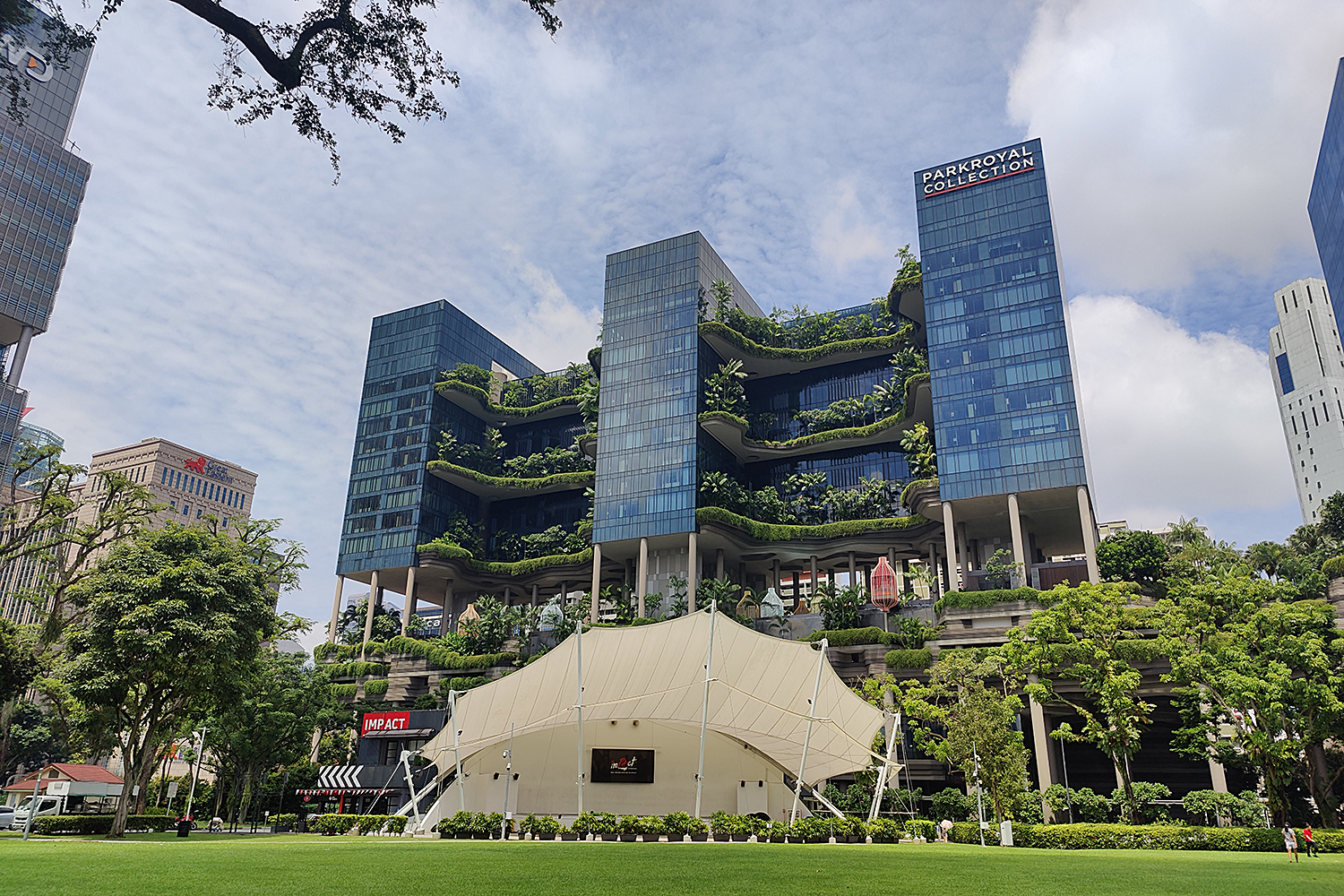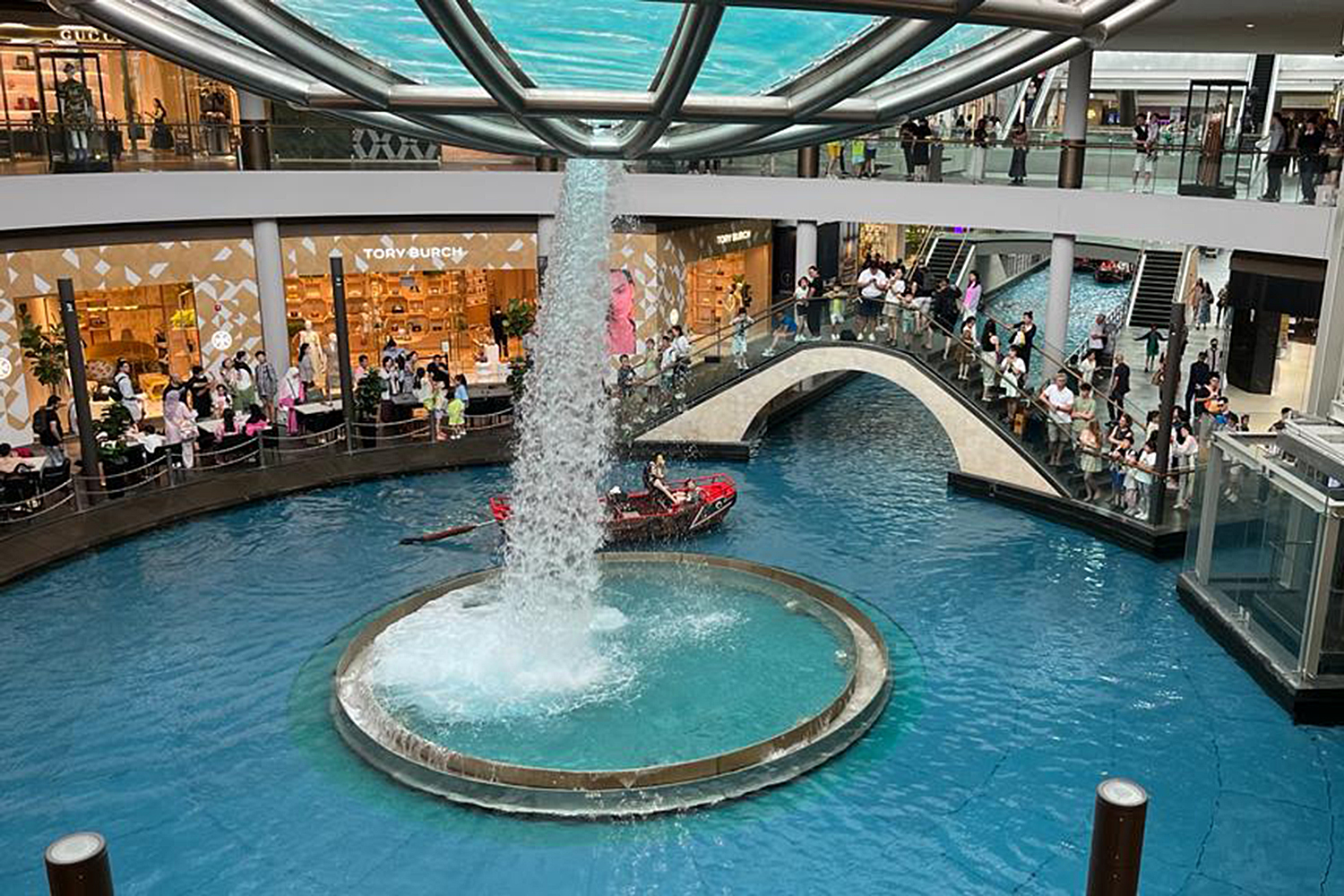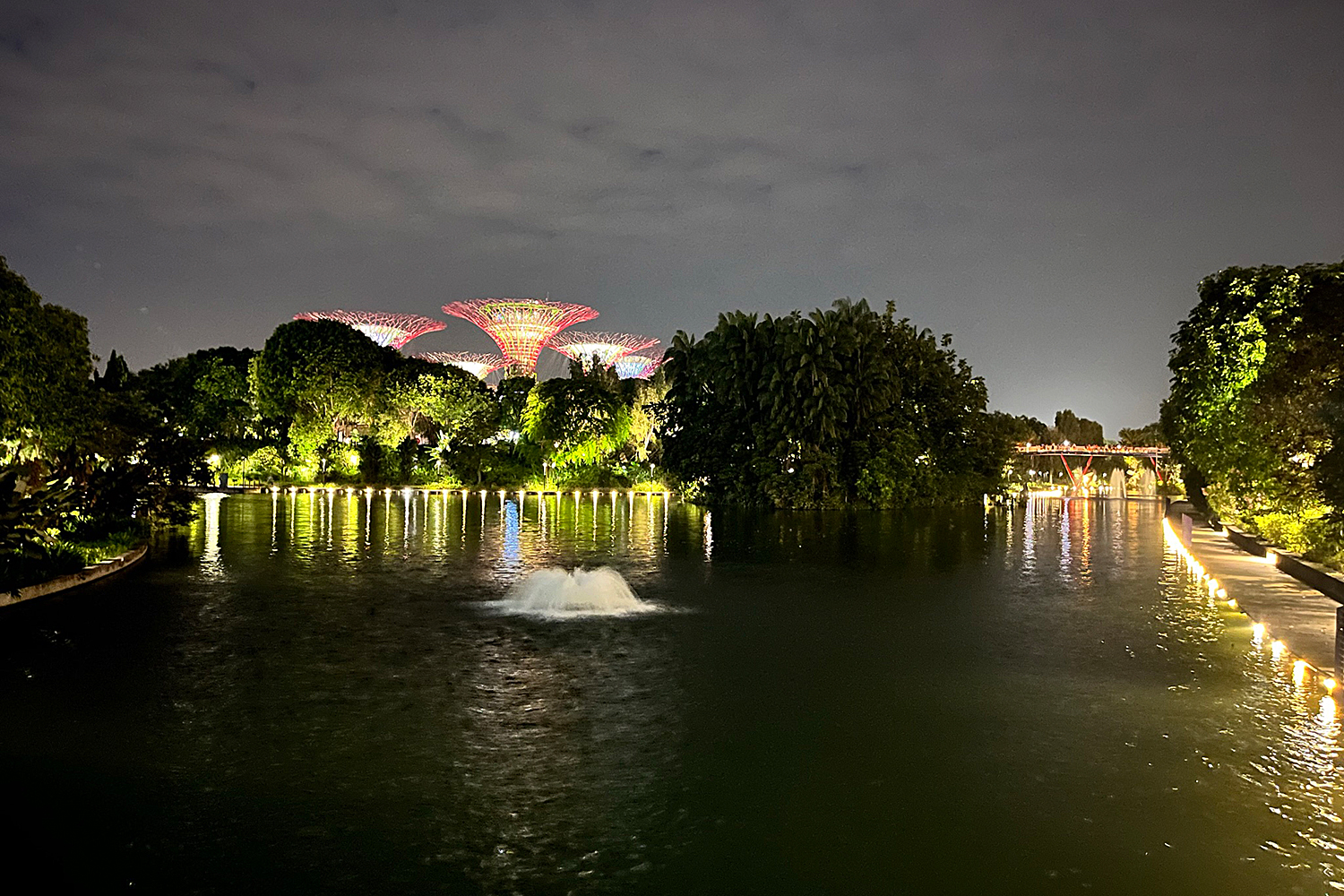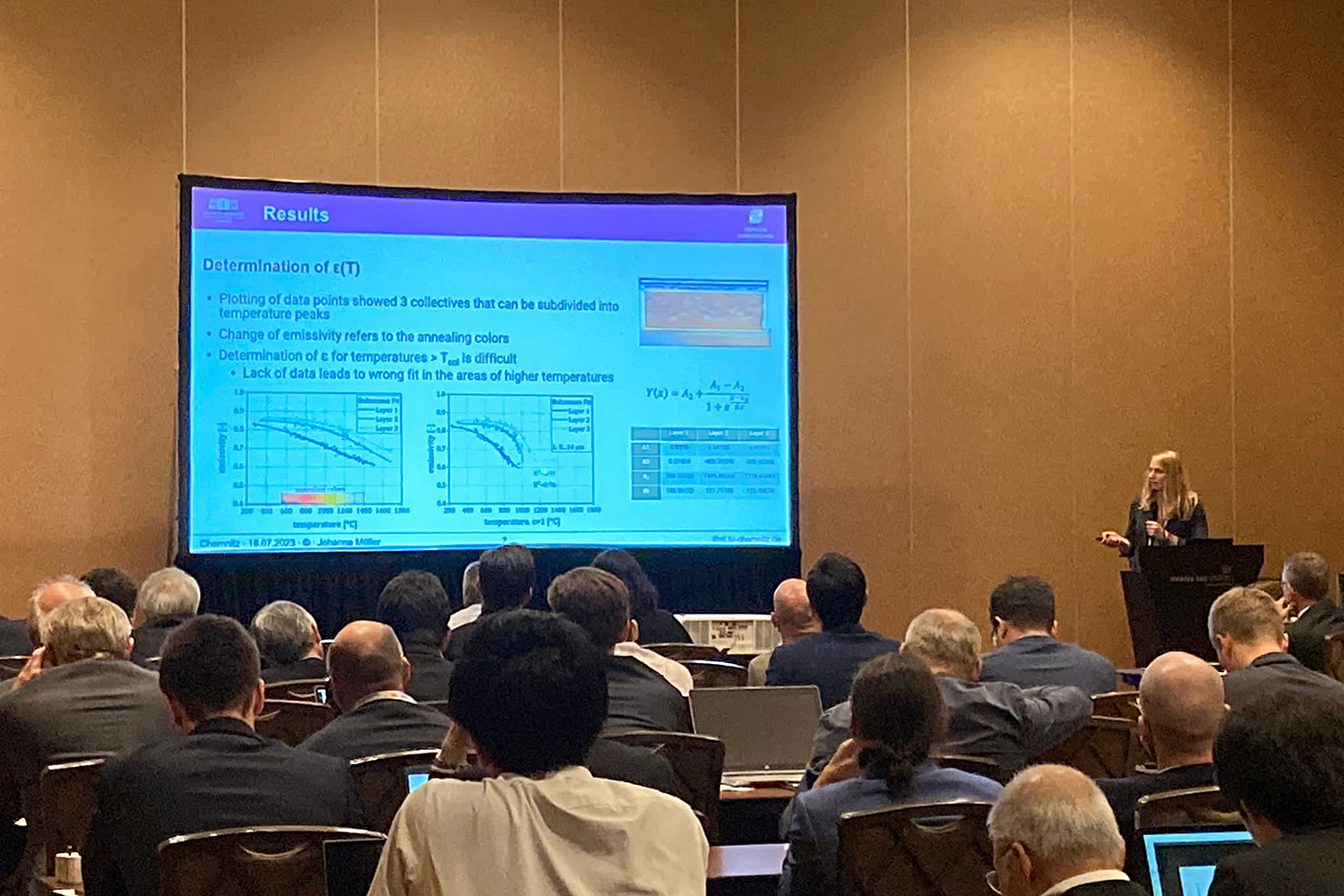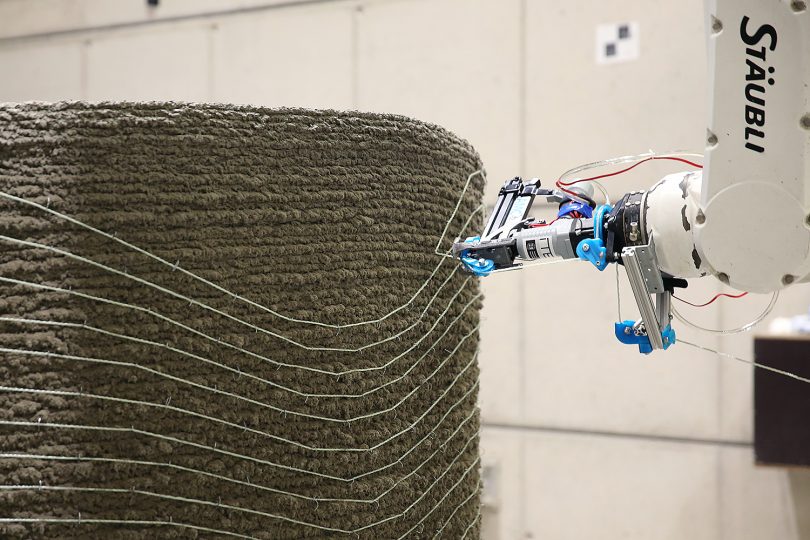Between High-Tech and Nature Conservation Future City Goes Global: With Johanna Müller and Hendrik Jahns in Singapore
What will the liveable city of tomorrow look like? Scientists from the research focus “Future City” exchange ideas with researchers from all over the world. In the series “Future City Goes Global” they take us to other cities and show us differences and similarities. Johanna Müller, visiting researcher at the Institute of Joining and Welding, and Hendrik Jahns from the Institute of Steel Structures gave an insight into their research in the Collaborative Research Centre “Additive Manufacturing in Construction” (AMC) at the “International Conference on Welding and Joining” in Singapore.
What was the reason for your journey?
As part of our doctorate, we had the opportunity to present our research results at the “IIW Annual Assembly and International Conference on Welding and Joining” in Singapore. In addition to classical welding topics, the conference also focused on additive manufacturing.
Sharing our knowledge and insights and getting feedback from other experts was extremely enriching. Besides the professional exchange, networking also played a central role at the conference. The discussions with experts from all over the world opened up new perspectives and potential cooperation opportunities.
What impressed you the most in the city? What was your personal highlight?
The city of Singapore excels in exemplary resource efficiency. Given the limited resources in this small city state, the city has developed smart solutions to reduce waste, optimise energy consumption and improve water management. One example is the collection of rainwater for the resource-efficient realisation of special installations, such as the river in the Marina Bay Sands Mall.
Singapore’s sustainable urban planning is another aspect we found admirable. The city has addressed urban design and green infrastructure in an impressive way. Beautiful parks, gardens and green spaces enrich the cityscape and create a harmonious link between urbanity and conservation. These green oases not only serve as places of recreation for residents, but also contribute to improving air quality and promoting biodiversity. Sustainable architecture is also used in office and hotel buildings to reduce water consumption and improve air quality through green facades.
Given the limited resources in this small city state, the city has developed smart solutions to reduce waste, optimise energy consumption and improve water management.
What makes this city special? What could we copy for German cities?
Singapore is a fascinating city, which – as already described – is characterised by its impressive resource efficiency and multicultural coexistence. During our stay, we experienced the city as a prime example of sustainable development and social integration from which German cities could draw inspiration.
What particularly distinguishes Singapore is its exemplary public transport system. The city has an extremely well-designed and modern transport system that minimises individual car use. The well-connected MRT (Mass Rapid Transit) trains and buses offer residents a convenient and environmentally friendly way to get around within the city. In the coming years, this system will be further expanded to close last gaps and improve main connections.
We were impressed by the harmonious coexistence of nationalities and cultures in Singapore. The city has created an inclusive environment where people from different cultural backgrounds live together respectfully. Intercultural dialogue and cultural events promote understanding and acceptance between communities, resulting in an enriching social fabric.
During our stay, we also noticed that Singapore has successfully established a culture of tap water use. Citizens are encouraged to drink tap water, which not only reduces the amount of plastic bottles but also has a positive effect on the environment.
Most trains are operated without drivers, which not only increases safety but also the efficiency of the system.
What is the number one means of transport in the city?
If there is one means of transport that is undoubtedly at the forefront in Singapore, it is the MRT (Mass Rapid Transit) system. The short interval times and the high degree of automation are remarkable. Trains run regularly and waiting times are minimal. Passengers only have to wait a few minutes for their next train, which significantly improves mobility in the city. Most trains are operated without drivers, which not only increases safety but also the efficiency of the system.
In terms of payment methods, the MRT system is very user-friendly. Major credit cards, among others, can be used to pass through the barriers, saving passengers from having to buy a ticket. Fares for travel on the MRT system vary depending on distance and ticket type, but they are usually affordable and offer excellent value for money. For our standard three-kilometre journey, we paid the equivalent of around 0.70 euros.
Have any plans for research cooperation emerged?
After our presentation, we were approached by numerous interested colleagues to discuss related topics and possible solutions for similar challenges, such as the qualification of 3D-printed steel components. The contacts that have been established – for example with TU Graz and Osaka University – are to be further expanded in order to successfully collaborate on aspects relating to our own research in the future. The exchange at the conference inspired and encouraged us to tackle innovative solutions together.

